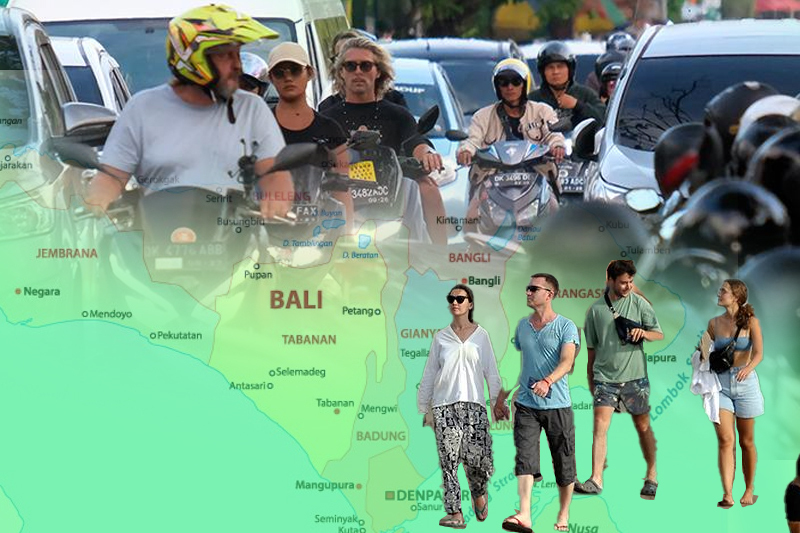
How will Bali look in 2033? Five predictions for a decade of change in the paradise
The only thing that surprised the Balinese more than the speed at which tourists vanished at the beginning of the Covid-19 pandemic was how quickly they returned. By the end of 2022, almost 58,000 international tourists were arriving at the island every day.
Although China, the largest feeder market before the pandemic, was closed, more than 2 million foreign tourists visited the paradise in Indonesia last year, nearly 50% more than the predictions made by the Ministry of Tourism in June. Up to 5 million could arrive this year, with the figure expected to climb further in the following years.
Add another 10 million domestic tourists per year and Bali soon gets back its spot among the most popular destinations on the planet. Read on for how the island would look and feel in the coming ten years, with a carefully curated list of five predictions.
Keep Reading
1. Infamous Traffic
Bali’s infamous congestion is back and the problem will potentially get much worse if proposed plans to make it illegal for international tourists to rent scooters are realised. Although Governor Wayan Koster is urging foreigners to rent cars, how will Bali tackle the taxi mafia? Urban planners have long been calling on authorities to build a metro or light-rail system.
2. Vanishing Rice Paddies
Scientists and community groups have warned that the Gilimanuk-Mengwi Toll Road and the compulsory acquisition of 1,200 acres of rice paddies to make space for it would reduce food security and devastate rural livelihoods on the island. By the end of the century, Bali could become completely urbanised and the only rice paddies left would be to lure tourists.
3. No More Cheap Accommodation
It was expected that landlords would try to recover the losses they sustained during the pandemic. But few had expected room rates and rents to become as high as those in the West within the first year itself. While “greedy landlords” must be blamed, we cannot undermine the fact that nearly everyone wants to stay in a handful of places, leaving others abandoned.
4. Medical Tourism
Indonesian President Joko Widodo wants to turn the island into an international medical tourism destination. Although public healthcare in Indonesia is well below global standards, the private medical sector in Bali is no less than excellent. A number of private hospitals are offering high-quality services for a fraction of what it would cost in places like Singapore.
5. Bulldozing of Backpacker Magnet Kuta
For years, Kuta on the lower west coast has been the poster boy for over-tourism. Its mix of cheap food, cheap accommodation, and cheap booze has been luring scores of backpackers every year. But the emergence of a few hotels and modern shopping centres in Kuta has shown that the place just 10 minutes from the airport is heavily underutilized.
Can Kuta be reimagined as a poster boy for sustainable tourism?




